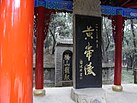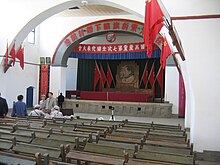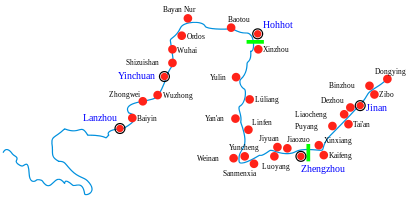
Shaanxi is an inland province in Northwestern China. It borders the province-level divisions of Shanxi, Henan (E), Hubei (SE), Chongqing (S), Sichuan (SW), Gansu (W), Ningxia (NW), and Inner Mongolia (N).

Deyang is a prefecture-level city of Sichuan province, China. Deyang is a largely industrial city, with companies such as China National Erzhong Group and Dongfang Electric having major operations there. The city is rich in history, with the Sanxingdui archeological site in Guanghan uncovering a rich trove of bronze and gold masks. More recently, Deyang was greatly afflicted by the 2008 Sichuan earthquake, which particularly impacted its county-level cities of Mianzhu and Shifang, in Deyang's northwest. Deyang spans an area of 5,911 km2 (2,282 sq mi).
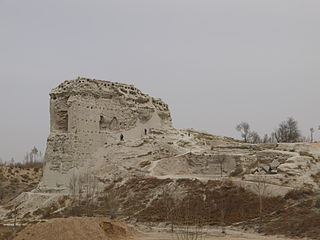
Yulin is a prefecture-level city in the Shanbei region of Shaanxi province, China, bordering Inner Mongolia to the north, Shanxi to the east, and Ningxia to the west. It has an administrative area of 43,578 km2 (16,826 sq mi) and as of the 2020 Chinese census had a population of 3,634,750.

Pingdingshan, also known as Eagle City, is a prefecture-level city in central Henan province, China. It had 4,904,701 inhabitants at the 2010 census whom 1,756,333 lived in the built-up area including Ye county being conurbated.

Qingyang is a prefecture-level city in eastern Gansu province, China.
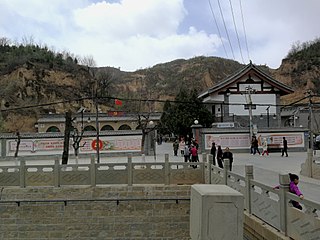
Yanchuan County is a county under the administration of the prefecture-level city of Yan'an, in the northeast of Shaanxi Province, bordering Shanxi Province across the Yellow River to the east. The county spans 1,985 square kilometres (766 sq mi) in area, and has a permanent population of 170,100 people as of 2019. In 1969, Xi Jinping was sent to work in Liangjiahe Village, Wen'anyi, Yanchuan County, as part of Mao Zedong's Down to the Countryside Movement. This has launched the county into the national spotlight, making the area a tourist site for many.
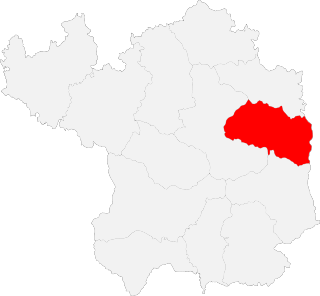
Yanchang County is a county under the administration of the prefecture-level city of Yan'an, in the northeast of Shaanxi Province, bordering Shanxi Province across the Yellow River to the east. It has a land area of 2,368.7 square kilometres (914.6 sq mi), and a population of 158,000.

Baota District, is a district in Yan'an, Shaanxi, China. The district has an area of 3,537.6 square kilometres (1,365.9 sq mi), and a permanent population of 497,085 as of 2019. Baota District serves as Yan'an's administrative center, hosting the city's government offices. The district is Yan'an's urban core, as it is highly urbanized, with over 80% of its population living in urban areas. The majority of Baota District's economy is derived from its tertiary sector, though the district is home to other economic activities such as agriculture, animal husbandry, and petroleum extraction.

Zichang is a city in the north of Shaanxi's province, China. It is the northernmost county-level division of the prefecture-level city of Yan'an. Zichang had a population of 273,000 as of 2017, of which, 115,000 lived in urban areas.

Ansai is a district of the city of Yan'an, Shaanxi province, China. It has a total area of 2,951.3 km2 (1,139.5 sq mi) and a population of 172,900 people. Part of the Loess Plateau, the district has an average elevation of 1,371.9 metres (4,501 ft). Its postal code is 717400, and its Serial Number is 610624.
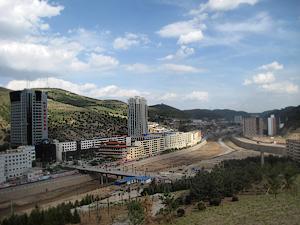
Wuqi County is a county under the jurisdiction of Yan'an City, in the northwest of Shaanxi Province, China, bordering Gansu province to the southwest. The county spans an area of 3,788.5 square kilometres (1,462.7 sq mi), and has a population of 145,600 as of 2012.

Huangling County is a county in the north of Shaanxi province, China, bordering Gansu province to the west. It is under the administration of the prefecture-level city of Yan'an. The county spans an area of 2,286.7 square kilometres (882.9 sq mi), and has a permanent population of 130,100 people as of 2012.
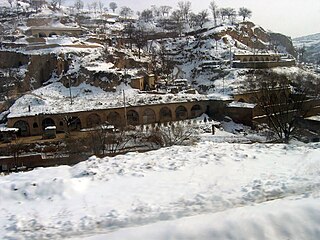
Qingjian County is a county in Yulin, in the north of Shaanxi province, China, bordering Shanxi province across the Yellow River to the east. It is under the administration of the prefecture-level city of Yulin. It spans an area of 1,881 square kilometres (726 sq mi), and has a population of about 210,000 as of 2021.
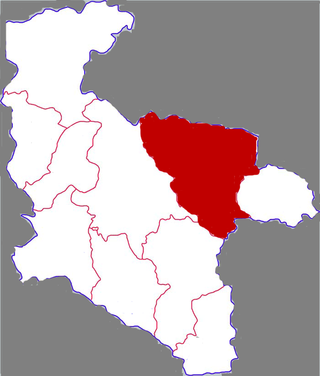
Xunyang is a county-level city in the south of Shaanxi province, China, bordering Hubei province to the northeast and southeast. It is under the administration of the prefecture-level city of Ankang. Its administrative seat is in the town of Chengguan. The county covers an area of 3,540.8 square kilometres (1,367.1 sq mi), and has a population of 450,122 as of 2019.
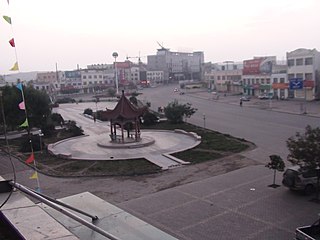
Otog Banner is a banner of southwestern Inner Mongolia, China. It is under the administration of Ordos City, and borders Otog Front Banner to the southwest and Uxin Banner to the southeast.

The Yanwu Expressway, also known as the Yan'an-Wuqi Expressway, or the Yan'an-Zhidan-Wuqi Expressway, or Shaanxi Provincial Expressway S16 is an expressway in Yan'an, Shaanxi, China. The route traverses the hills of the Loess Plateau in the Shaanbei region, beginning at an interchange with the G65 Baotou-Maoming Expressway in the town of Yanhewan in Ansai District, and travelling through Zhidan County to its terminus in Wuqi County. The expressway's total length is 109.8 kilometres (68.2 mi). Construction started in on December 14, 2008, and on December 19, 2013, construction was completed, and the expressway was opened to traffic. Upon its completion, it became Shaanxi's longest provincial highway by mileage.
The Yan River is a river in Shaanxi, China. The river flows from its source, the Xingzi River in Jingbian County, in the prefecture-level city Yulin, and then flows through neighboring Yan'an, finally flowing into the larger Yellow River in Yanchang County, Yan'an. The Yan River flows a total length of 286.9 kilometres (178.3 mi), and has a total basin area of 7,725 square kilometres (2,983 sq mi).
Liqu is a town in Baota District, Yan'an, Shaanxi, China. Liqu is located in the northeast of central Baota District, bordered by Fengzhuang Township to its north, Chuankou to its south, Yaodian to its east, and Qiaogou Subdistrict to its west. The town spans an area of 136 square kilometres (53 sq mi), and has a population of 21,167 according to the 2010 Chinese census.
Madongchuan is a town in Baota District, Yan'an, Shaanxi, China. The town spans an area of 252.73 square kilometres (97.58 sq mi), and has a population of 6,544 as of 2010.
Fenghuangshan Subdistrict is a subdistrict in Baota District, Yan'an, Shaanxi, China. As of 2010, the subdistrict has a population of 44,294.


